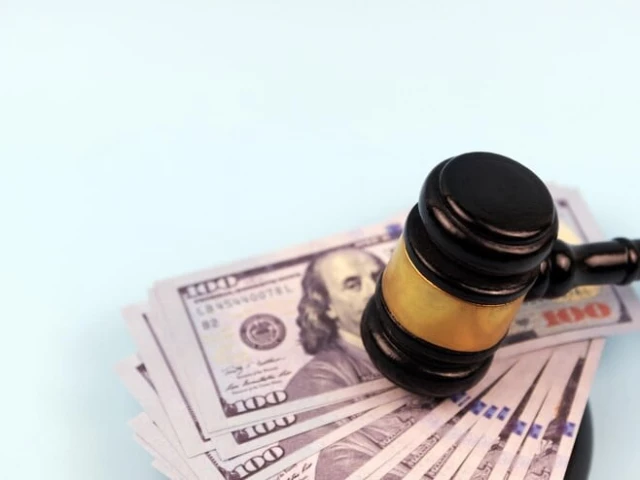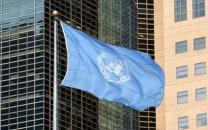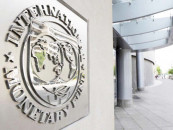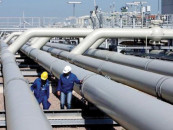Global economies reel from Trump's tariffs punch
Pakistan hit with 19% tariff after US deal

US President Donald Trump's latest wave of tariffs on exports from dozens of trading partners sent global stock markets tumbling on Friday and countries and companies scrambling to seek ways to strike better deals.
Pakistan, which exported about $4.1 billion worth of apparel to the United States in the 2024 fiscal year, secured a tariff rate of 19%, but industry figures were cautious about the immediate impact.
"Considering India's lower production costs and the likelihood of it negotiating reduced tariffs in the near term, Pakistan is unlikely to either gain or lose a meaningful share in the apparel segment," Musadaq Zulqarnain, founder and chair of Interloop Limited — a leading Pakistani exporter.
"If the current reciprocal tariff structure holds, significant investment is likely to flow into DR-CAFTA countries and Egypt," he said, referring to a trade agreement between the US and a group of Caribbean and Central American countries.
Elsewhere in South Asia, Sri Lanka also secured a 20% tariff rate from the US, which accounted for 40% of its apparel exports of $4.8 billion last year. "The devil will be in the details as there are questions over issues such as trans-shipment, but overall it's mostly good," Yohan Lawrence, secretary general of the Joint Apparel Associations Forum, a Sri Lankan industry body, told Reuters.
Bangladesh has negotiated a 20% tariff on exports to the US, down from the 37% initially proposed by US President Donald Trump, bringing relief to exporters in the world's second-largest garment supplier.
The new rate is in line with those offered to other major apparel-exporting countries such as Sri Lanka, Vietnam, Pakistan and Indonesia.
India, which failed to reach a comprehensive agreement with Washington, will face a steeper 25% tariff.
As Trump presses ahead with plans to reorder the global economy with the highest tariff rates since the early 1930s,
Switzerland, "stunned" by 39% tariffs, sought more talks, as did India, hit with a 25% rate. New tariffs also include a 35% duty on many goods from Canada, 50% for Brazil, 20% for Taiwan, which said its rate was "temporary" and it expected to reach a lower figure.
The presidential order listed higher import duty rates of 10% to 41% starting in a week's time for 69 trading partners, taking the US effective tariff rate to about 18%, from 2.3% last year, according to analysts at Capital Economics.
US stocks took an immediate hit. By early afternoon on Friday, the Dow Jones Industrial Average had dropped 0.96% to 43,708.00, the S&P 500 1.21% to 6,262.88 and the Nasdaq Composite 1.65% to 20,773.64.
Markets were also reacting to a disappointing jobs report. Data showed US job growth slowed more than expected in July while the prior month's data was revised sharply lower, pointing to a slowdown in the labor market. Global shares stumbled, with Europe's STOXX 600 down 1.89% on the day and 2.5% on the week, on track for its biggest weekly drop since Trump announced his first major wave of tariffs on April 2.
Trump's new tariffs have created yet more uncertainty, with many details unclear. They are set to take effect on Aug 7 at 0401 GMT, a White House official said. Trump administration officials defended the president's approach. "The uncertainty with respect to tariffs ... was critical to getting the leverage that we needed to create the circumstance in which the president could create the trade deals we've seen over the last few weeks, which have been nothing short of monumental," Council of Economic Advisers Chair Stephen Miran said on CNBC.
The European Union, which struck a framework deal with Trump on Sunday, is still awaiting more Trump orders to deliver on agreed carve-outs, including on cars and aircraft, EU officials said, saying the latest executive orders did not cover that.
Also, it is unclear how the administration intends to define and police the transshipment restrictions, which threaten 40% levies on any exporter deemed to have tried to mask goods from a higher-tariffed originator, such as China, as their own product.
Trump's tariff rollout also comes amid evidence they have begun driving up prices. US Commerce Department data released Thursday showed prices for home furnishings and durable household equipment jumped 1.3% in June, the biggest gain since March 2022.
NO WINNERS?
Countries hit with hefty tariffs said they will seek to negotiate with the US in hopes of getting a lower rate. Switzerland said it would push for a "negotiated solution" with the US "It's a massive shock for the export industry and for the whole country. We are really stunned," said Jean-Philippe Kohl, deputy director of Swissmem, representing Switzerland's mechanical and electrical engineering industries.
South Africa's Trade Minister Parks Tau said he was seeking "real, practical interventions" to defend jobs and the economy against the 30% U.S. tariff it faces. Southeast Asian countries, however, breathed a sigh of relief after the US tariffs on their exports that were lower than threatened and leveled the playing field with a rate of about 19% across the region's biggest economies. Thailand's finance minister said a reduction from 36% to 19% would help his country's economy.
"It helps maintain Thailand's competitiveness on the global stage, boosts investor confidence and opens the door to economic growth, increased income and new opportunities," Pichai Chunhavajira said.
Australian products could become more competitive in the US market, helping businesses boost exports, Trade Minister Don Farrell said, after Trump kept the minimum tariff rate of 10% for Australia.





















COMMENTS
Comments are moderated and generally will be posted if they are on-topic and not abusive.
For more information, please see our Comments FAQ